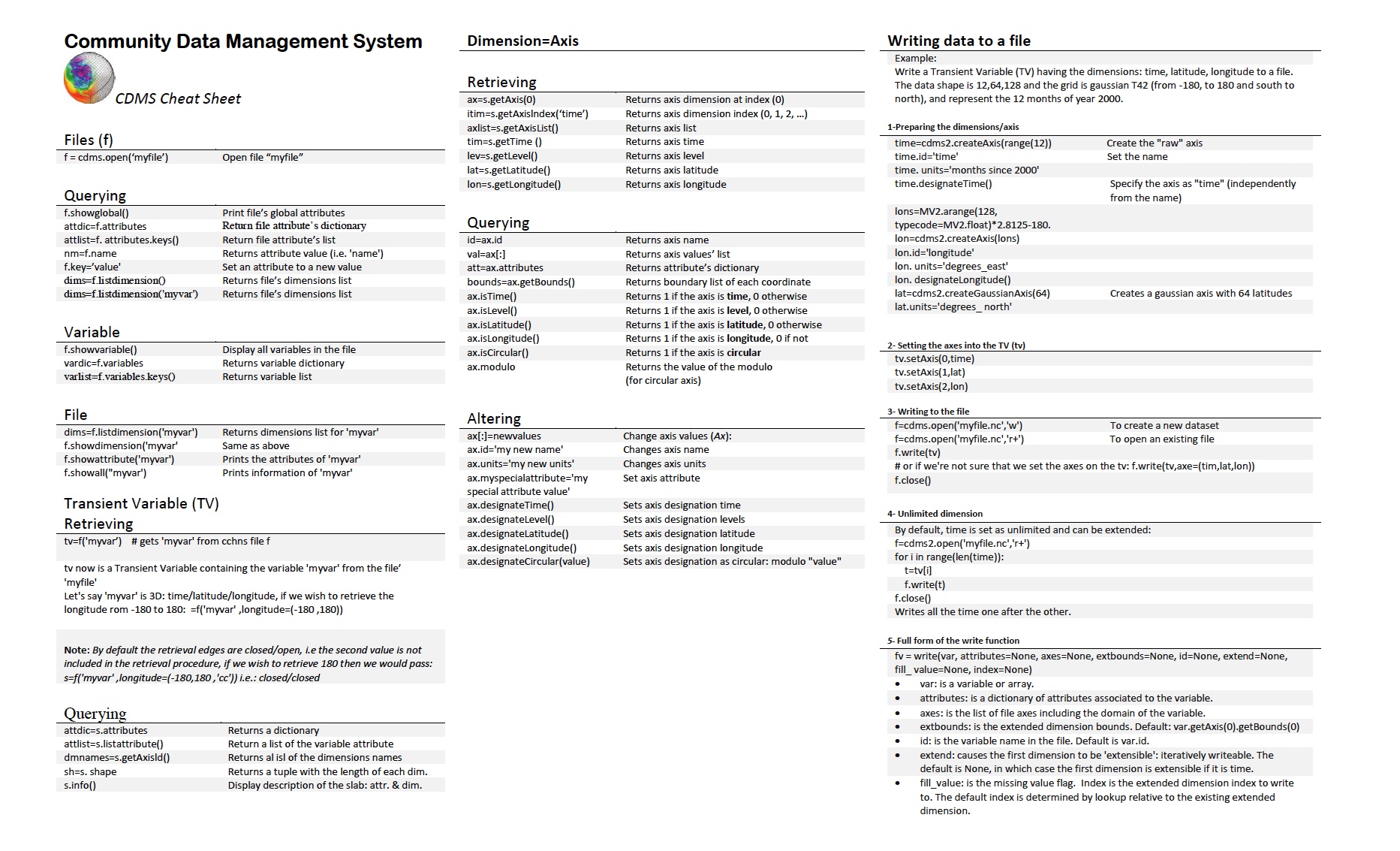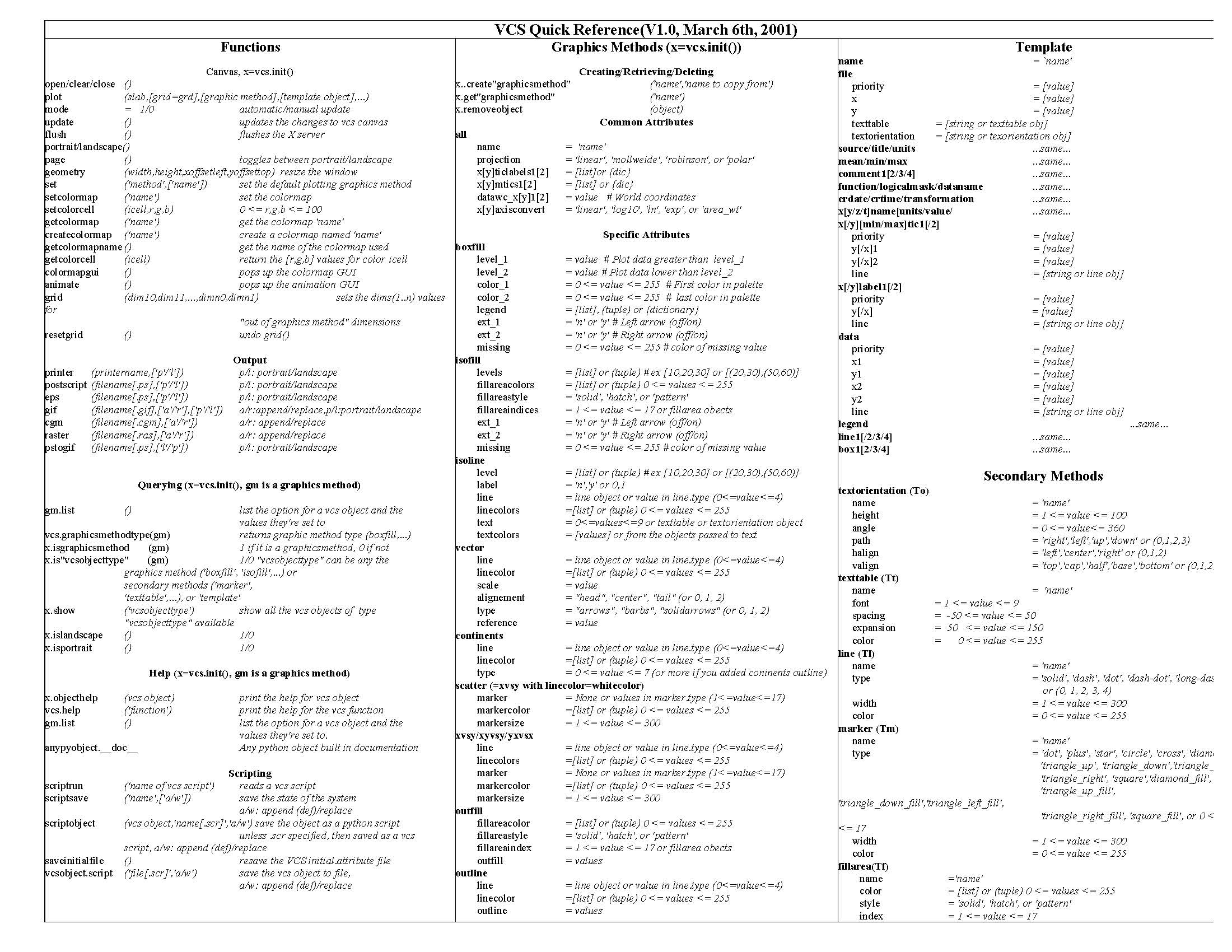7. APPENDIX A¶
7.1. CDMS Classes¶
Figure 1, “CDMS Classes”, illustrates the class inheritance structure of CDMS. The classes may be categorized as abstract or concrete. Only concrete classes are meant to be used directly. In contrast an abstract class defines the common interface of its subclasses. For example, the class AbstractAxis2D defines the common interface for two-dimensional coordinate axes. It has concrete subclasses DatasetAxis2D, FileAxis2D, and TransientAxis2D, which are used in applications. Abstract classes are denoted in italics.
For many abstract classes there are three ‘flavors’ of subclass: dataset, file, and transient. Dataset-related objects are thought of as being contained in datasets in the sense that operations on those objects result in I/O operations on the corresponding dataset. The same is true of file-related objects. Objects in datasets and files are examples of persistent objects, whose state persists after the application exits. On the other hand, transient objects live in memory and are not persistent.
In general the concrete subclasses closely mirror the interface of the abstract parent class. For this reason this document defines the interfaces of the abstract classes, and only discusses a concrete class in the few cases where the interface has been extended. This allows applications to treat the behavior of, say a dataset axis and file axis, as identical.
FIGURE 1. CDMS Classes
8. APPENDIX B¶
8.1. Quick Start (Cheat Sheet)¶
8.2. VCS Quick Reference (Cheat Sheet)¶
https://cdms.readthedocs.io/en/latest/_images/vcs_quick_ref.jpg
8.3. Release Notes¶
8.3.1. Release 4.0¶
CDMS version 4.0 adds support for nonrectangular grids:
- The following grid classes were added:
AbstractHorizontalGrid
AbstractCurve-Grid
AbstractGenericGrid
DatasetCurveGrid
FileCurveGrid
TransientCurve-Grid
DatasetGenericGrid
FileGenericGrid
TransientGenericGrid.
- The following axis classes were added:
AbstractCoordinateAxis
AbstractAuxAxis1D
AbstractAxis2D
DatasetAuxAxis1D
FileAuxAxis1D,
TransientAuxAxis1D
DatasetAxis2D
FileAxis2D
TransientAxis2D.
The getMesh and clone methods were added for grids.
An interface to the SCRIP package was added.
8.3.2. Release 3.0 Overview¶
CDMS version 3.0 is a significant enhancement of previous versions. The major changes were:
CDAT/CDMS was integrated with the Numpyal Python masked array class MV2.MaskedVariable. The MV submodule was added as a wrapper around MV.
Methods that read data, such as subRegion, subSlice, and the slice operations, return instances of class TransientVariable. The plot and regrid modules were modified to handle masked array input. The specifiers time=…, latitude=…, etc. were added to the I/O routines.
The class TransientVariable was added.
A number of new functions were added, notably subRegion and subSlice, which return instances of TransientVariable.
When a masked array is returned from a method, it is “squeezed”: singleton dimensions are removed. In contrast, transient variables are not squeezed. I/O functions have a squeeze option. The method setAutoReshapeMode was removed.
Internal attributes are handled in the InternalAttributes class. This allows CDMS classes to be subclassed more readily.
The class Variable was renamed DatasetVariable.
The cu module was emulated in cdms. cu and cdms methods can be mixed.
The code was modularized, so that Python, CDMS, and Numpyal Python can be built and installed separately. This significantly enhances the portability of the code.
8.3.3. Details¶
8.3.3.1. AbstractVariable¶
The functions getRegion, getSlice, getValue, and the slice operators all return an instance of MV, a masked array. Singleton dimensions are squeezed.
The functions subRegion and subSlice return an instance of TransientVariable. Singleton dimensions are not squeezed.
The xxSlice and xxRegion functions have keywords time, level, latitude, and longitude.
The input functions have the keyword squeeze.
AbstractVariable inherits from class Slab. The following functions previously available in module cu are Slab methods:
getattribute
setattribute
listdimattributes
getdimattribute
listall, and info
AbstractVariable implements arithmetic functions, astype.
The write function was added.
8.3.3.2. AbstractAxis¶
subaxis was renamed subAxis for consistency.
Generalized wraparound was implemented, to handle multiple cycles, reversing, and negative strides. By default, coordinate intervals are closed. The intersection options ‘n’,’e’,’b’,and ‘s’ were added to the interval indicator - see mapIntervalExt.
8.3.3.3. AbstractDatabase¶
The function open is synonymous with openDataset.
8.3.3.4. Dataset¶
The function open is synonymous with openDataset.
8.3.3.5. Cdms Module¶
- The following functions were added:
asVariable
isVariable
createVariable
The function setAutoReshapeMode was removed. It is replaced by the squeeze option for all I/O functions.
8.3.3.6. CdmsFile¶
The function createVariable has a keyword fill_value. The datatype may be a Numpy/MV typecode.
The function write was added.
8.3.3.7. CDMSError¶
All errors are an instance of the class CDMSError.
8.3.3.8. AbstractRectGrid¶
The function createGaussianGrid was added.
8.3.3.9. InternalAttributes¶
The class InternalAttributes was added.
It has methods:
add_internal_attribute
is_internal_attribute
replace_external_attributes
8.3.3.10. TransientVariable¶
The class TransientVariable was added. It inherits from both AbstractVariable and MV.
The cdms module function createVariable returns a transient variable.
This class does not implement the functions getPaths or getTemplate.
8.3.3.11. MV¶
The MV submodule of cdms was added.
9. APPENDIX C¶
9.1. Module cu¶
The cu module is the original CDAT I/O interface. As of version 3
it is emulated in the cdms module. It is maintained for backward
compatibility.
The cu classes are Slab, corresponding to TransientVariable
in CDMS, and cuDataset, corresponding to Dataset in CDMS.
9.2. Slab¶
9.2.1. Table Slab Methods¶
Type |
Method |
Definition |
|---|---|---|
Various |
|
|
Various |
|
|
None |
|
|
List |
|
|
List |
|
|
None |
|
|
9.3. cuDataset¶
9.3.1. Table cuDataset Methods¶
Type |
Method |
Definition |
|---|---|---|
None |
|
Clear the default variable name. |
None |
|
|
Array |
|
|
Axis |
|
|
Various |
|
|
String |
|
|
Various |
|
|
9.3.2. Table cuDataset Methods(cont’d)¶
Type |
Method |
Definition |
|---|---|---|
Variable |
|
|
List |
|
|
List |
|
|
List |
|
|
List |
|
Return a list of the global attribute names. |
List |
|
Return a list of the variables in the file. |
9.3.3. Table cuDataset Methods(cont’d)¶
Type |
Method |
Definition |
|---|---|---|
None |
|
|
None |
|
|
None |
|
|
None |
|
Print the global file attributes. Output is sent to device. |
None |
|
Print the list of variables in the file. |



